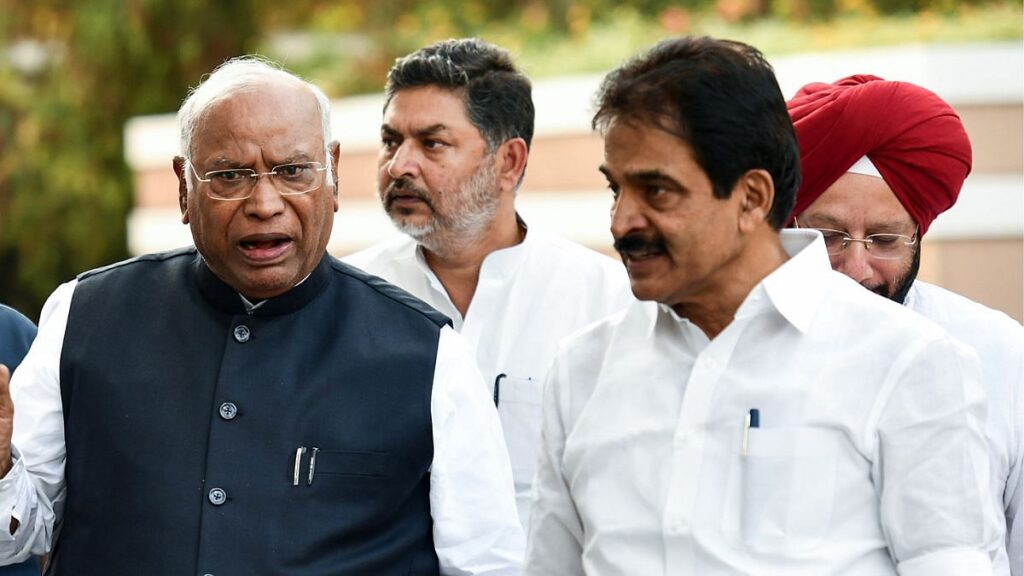“The States which have effectively implemented the population control program pushed by the Centre, and consequently whose population share has come down, should not be penalized and hence, population should not be the sole yardstick for delimitation,” stated the Telangana assembly resolution.
Currently, the Congress is in power in two southern states, Telangana and Karnataka. With a small population due to its hilly terrain, Himachal Pradesh is its only outpost in North India.
Congress sources said the party could not afford to take a maximalist position on the issue, such as Tamil Nadu’s ruling DMK, had as “being a national party with real presence across the country, we need to adopt a more nuanced approach”.
While Article 82 of the Constitution mandates a delimitation exercise following the decennial Census, the number of Lok Sabha seats has remained frozen since 1976 due to the 42nd Amendment. In 2002, the Atal Bihari Vajpayee government, through the 84th Amendment Act, further extended the delimitation freeze until the first Census post the year 2026.
So far, the 2021 Census remains pending. Also, with no clarity from the Centre on delimitation, the Congress high command has avoided coming across as too combative on this particular issue.
However, Union Home Minister Amit Shah’s remarks at a rally in Coimbatore last month, saying southern states would not lose a single seat due to delimitation since the allocation of new seats would be on a pro-rata, or proportional basis, is now compelling the Congress to formulate its position on the issue.
“The law is clear that the next delimitation can be carried out only after the first Census, post-2026. Since even the 2020-21 decadal Census is pending, we are at least a decade away from delimitation. However, the question is: what should be the parameter? If populations remain the basis, the southern states will obviously lose out as the rise in their seats will be far less than the increase in seats in northern states, where populations have risen exponentially,” said a senior Congress leader.
Delimitation: For & against
The Dravida Munnetra Kazhagam (DMK) has been very vocal against the conduct of delimitation with population as its basis.
Tamil Nadu Chief Minister and DMK chief M.K. Stalin hosted a conclave on the issue in Chennai last week. Telangana Chief Minister A. Revanth Reddy and Karnataka Deputy Chief Minister D.K. Shivakumar from the Congress attended the conclave.
Apart from the southern satraps of the Congress, other non-BJP parties from the South—the Bharat Rashtra Samithi (BRS), Punjab’s ruling Aam Aadmi Party (AAP), and Odisha’s principal Opposition Biju Janata Dal (BJD)—also attended the Chennai conclave.
However, prominent anti-BJP parties from the northern, eastern, and western regions, including the Samajwadi Party (SP), Rashtriya Janata Dal (RJD), Trinamool Congress (TMC), the Sharad Pawar-led Nationalist Congress Party (NCP) faction, and Shiv Sena (UBT), were conspicuous by their absence at the conclave. Their absence reflected that they were not particularly perturbed by the possibility of a population-based delimitation exercise, causing a jump in the share of the Lok Sabha seats in the states where their roots lay.
Moreover, only Congress MPs from Punjab and Tamil Nadu took part in the DMK-led protest on delimitation in the Parliament on 19 March this year.
Inequitable political representation
Due to various amendments, the Lok Sabha strength has risen from 500, as envisaged originally, to 552. The new Parliament Building has a seating capacity of 888 MPs.
Also, from one MP representing 7,50,000 people—as mandated under the unamended Article 81—the number of people represented by an MP went up to 10.11 lakh in 1977, which saw the first elections after the freeze on the Lok Sabha seats.
Shruti Rajagopalan, a senior research fellow at the Mercatus Center at George Mason University, US, said that lately, across India, an average MP represents 2.5 million, or 25 lakh people compared to the capped ratio of one MP per 750,000 people under the original Article 81.
Rajagopalan argued that the freeze on the Lok Sabha seats had resulted in severe malapportionment—inequitable political representation—in India. To emphasise her point, she cited the contrasting examples of Bihar and Tamil Nadu. In Bihar, one MP represents roughly 3.1 million, or 31 lakh people, whereas in Tamil Nadu, one MP represents 1,97 million, or 19.7 lakh people.
“Today, the asymmetry in seat share for states looks much worse than in 2001. Tamil Nadu has nine more seats than its population proportion, whereas Kerala has six more seats. Bihar and Uttar Pradesh, respectively, have nine and twelve seats fewer than their population proportion,” Rajagopalan said.
“By 2031, at the end of the delimitation freeze, the problem will only intensify. Uttar Pradesh and Bihar will likely fall 12-13 seats short of their population proportion; Tamil Nadu will likely have 11 seats more than its population proportion; and all other states will be somewhere in between,” Rajagopalan added.
(Edited by Madhurita Goswami)


